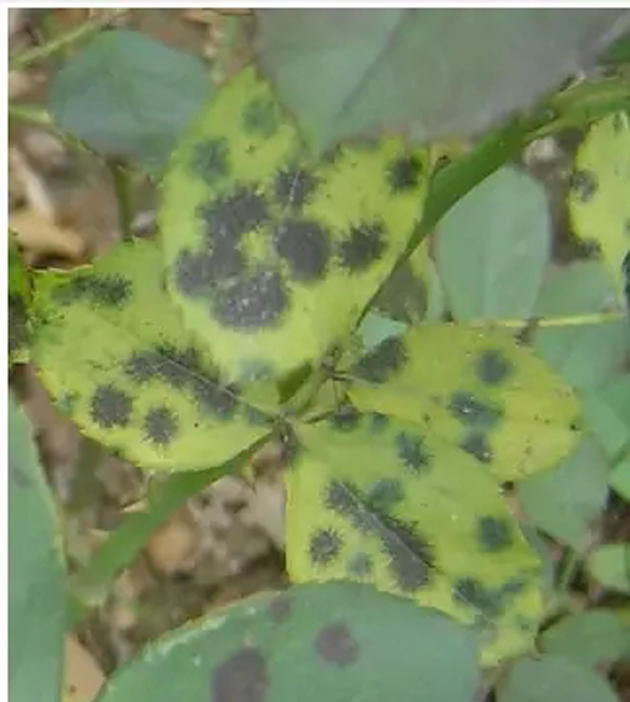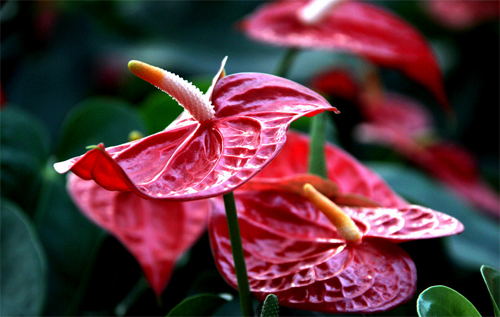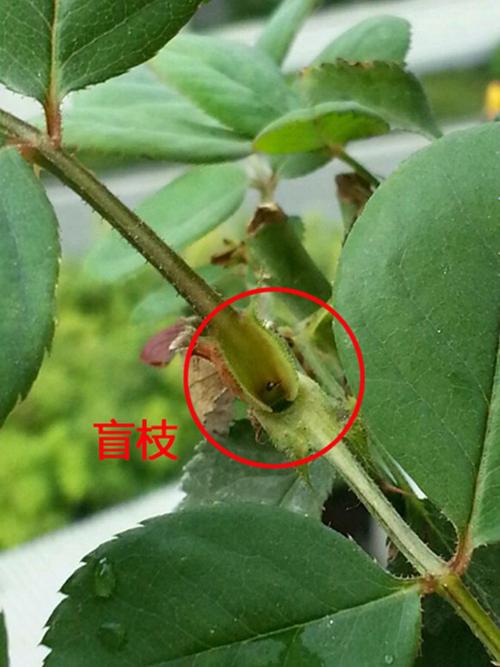Identification and control of diseases and insect pests of rose aphids thrips red spiders
Speaking of the rose, it is a kind of plant that many people like to breed, and the rose blossoms are also very beautiful, but in the cloudy and rainy season, the diseases and insect pests there are really more than one touch, and the most fatal thing is that they cannot recognize these pests. How to identify these pests and how to control them?
The most common diseases and insect pests of domestic rose are black spot, powdery mildew, aphids, thrips, green worms, and red spiders. We can control the disease, buy the corresponding anther for prevention and treatment.

Black spot:
Black spot treatment drugs, prevention is more important than treatment, regular spray germicidal prevention.
If these two kinds are mixed, the effect is better!
Powdery mildew
For powdery mildew treatment, remove the powdered leaves and throw them away before spraying them.
Mixed use, the effect is better!
Aphids:
Thrips:
Aphid, thrips treatment drugs mixed use, the effect is better!
Green worms:
Treatment of green worms
Red Spider:
Red spider therapeutic drug
The red spider is very stubborn and finds it difficult to kill, but the method you have mastered is wrong. It takes once every three days, at least three times in a row, because every time you spray, you kill worms, but the eggs are still alive and hatch a lot within three days, so keep spraying, at least three times in a row.
Precautions for the use of drugs:
1. The above drugs have obvious effects on rose diseases and insect pests.
2. The drugs corresponding to the same kind of disease can be mixed, and the effect is better.
3. Try not to mix drugs for different diseases. They can be used at intervals of 2-3 days.
4. the prevention of diseases and insect pests in peacetime is also very important. Rose should be ventilated, waterlogged and fertilized in time.
If you want to raise the rose at home is not easy, to take good care of, rose pests are not treated, it is really very disgusting.
Identification of rose diseases and insect pests (photo)
Rose is a famous medicine jar, but many flower friends do not know how to identify the diseases and insect pests of rose. This paper summarizes some common rose pest identification maps with corresponding prevention and control methods, which is very helpful for flower lovers who like to raise rose.
1. Rose powdery mildew: rose powdery mildew is a fungal disease, which harms flowers such as rose and Rosaceae. It first infects in mid-late May and spreads in June and July. After the damage, there is a layer of white powder on the leaf surface and tender shoots, and the leaves turn yellow and fall off when it occurs seriously, which seriously affects the plant growth and flowering.
Medication: alternate use of 500,800 times mancozeb, chlorothalonil, carbendazim and topiramate in spring growth season, and spray 1000 to 1500 times of thiophanate methyl during the onset period has a good control effect. After spraying, the powdery layer of the injured part became dark gray, dried and disappeared. Huangmei and autumn rain are the peak of the disease, and the incidence of damp, hot and rainy in summer is also very strong. During this period, the interval of pesticide application should be shortened. Spray attention: generally 8: 00 to 10:00, 4: 00 to 7: 00 in the afternoon. It is better to spray without wind on a sunny day. Note: powdery mildew prevention is more effective than treatment, so it is best to spray fungicides more than once in 7-15 days.
2. Rose and rose black spot (scab): the disease is a fungal disease. Black spot overwinters on diseased remains, and insects can also spread by means of Rain Water or sprinkler water splash transmission. The optimum temperature for the disease is about 26 degrees Celsius. In the rainy season, the host plant is prone to serious disease, new transplant, damaged roots and weak growth. The disease occurred in Beijing in mid-May and entered a peak period from July to September. There were two peaks in the Yangtze River basin from May to June and from August to September.
Clean the fallen leaves at any time, pick the diseased leaves, reduce the source of infection, heavily trim the seriously diseased plants in winter, remove the overwintering pathogen on the diseased stem, do not place it too densely when potted, it is best not to put it directly on the ground, lest the basin soil is too wet when there is stagnant water on the ground. the best thing is to put it on the stepped planting platform to improve the watering method and time, and should be poured from the edge of the basin to avoid spraying. Do not water at night, lest the leaves can not dry quickly when there is water, which is beneficial to the invasion of germs.
Medication: DuPont Fuxing 1000 times concentration mancozeb is used alternately or mixed once every 7 days, and the diseased leaves are cut off and incinerated on both sides of spraying leaves.
3. Rose aphids: the harm of aphids is direct and indirect, and the direct harm is to absorb the nutrition of tender bud juice, lead to leaf bud deformity, malnutrition and affect photosynthesis. The indirect harm is to pierce the surface of branches and leaves through mouthparts, spread bacteria and viruses, and increase the probability of infection of various diseases.
The prevention and control of aphids is very simple. Imidacloprid 800 is sprayed on the plant surface once every 7 days, 2-3 times.
4. Rose red spider (mite): red spider is a common disease in the process of flower cultivation. The bug is small, less than 1 mm, round or oval, orange or reddish brown. As the small body is not easy to be found, once the harm is found, the damage to flowers is often more serious. This kind of insect damage way is to pierce the mouthparts into the flower leaves to suck the juice, so that the flower chlorophyll is destroyed, the leaves show gray-yellow spots or patches, and the leaves become withered and yellow, or even fall off. The red spider tarantula has a strong reproductive ability and can reproduce a generation in about 5 days at the earliest. This insect likes the high temperature and dry environment, so it propagates rapidly and does serious harm in the high temperature and dry climate.
Medication: love card mite or gold mite branch 1000 times liquid, leaf positive and negative branches are sprayed with potion, alternate use 2 times, easy to do, simply easy and happy ah! Kiss!
5. Monthly downy mildew & blight: these two diseases generally occur together. The disease can occur at all stages from seedling to harvest, and the damage of adult plant is more serious. Mainly harmful leaves, developing from the base to the upper leaves. At the initial stage of the disease, light yellow nearly round to polygonal spots are formed on the leaf surface, which is easy to be complicated with angular spot disease. When the air is moist, the leaf back produces a frost-like mildew layer, which sometimes spreads to the leaf surface. In the later stage, the disease spot withered and died, showing yellowish brown, and when it was serious, all the outer leaves withered and died, similar to Verticillium wilt.
Transmission route and disease condition: the pathogen overwinters with hyphae on seeds or lettuce in autumn and winter, or oospores on diseased remains. It is mainly spread by airflow, watering, farming and insects. The spore germination temperature of the pathogen is 6: 10 ℃ and the suitable infection temperature is 15: 17 ℃. The disease is easy to occur at low temperature and high humidity. When the planting is too dense and the disease is serious, it can cause a large number of deaths and the mortality rate is very high.
Treatment: 1. Move the rose to a ventilated, dry and sunny place.
two。 Remove all diseased leaves and destroy them (important).
3. Alternately or mixed with 1000 times of anthrax and 1000 times of anthrax, 1000 times of silver farad (aldicarb) was used continuously for 3 times in 7 days.
6. Thrips: thrips are insects that feed on plant juices and belong to the order Thysanoptera in animal taxonomy. The larvae are white, yellow, or orange, and the adults are brown or black. Eating can cause damage to leaves and flowers.
Harm: thrips suck the juice of young plant tissues (shoots, leaves, flowers, fruits, etc.) with adult and nymph files, the injured young leaves and shoots become hard, curl and wither, and the plant grows slowly.
Note: because the thrips themselves are leaping and like nocturnal activities, it is generally difficult to find the insect, and the disease can only be analyzed by the shape of tender leaves.
Treatment: imidacloprid or acetamiprid 800 color fertilizer * liquid spray foliar back (buds focus on care) 2-3 times easy to do, because the young rose leaves are too smooth, resulting in insufficient adhesion of potions or fertilizers, spraying or foliar fertilizer can add some silicone as an adhesive.
What about the growing insects of potted rose flowers? disease and pest control of rose flowers (spraying insecticides)
Worms can grow in any plant, and rose flowers are no exception. Rose is one of the best indoor flowers to raise. Its survival rate is very high, but it may die if you don't take good care of it. The most common pest of rose flowers is the red spider, which can cause the leaves of rose flowers to turn yellow and wither. What about the growing bugs of rose flowers? let's take a look at the pest control of rose flowers.
First, what about the long bugs in rose flowers? spray medicine immediately.
Chinese rose is a kind of plant that likes light very much. if it is left without light for a long time, it will have symptoms and worms. Rose long bugs are very common, there are many reasons for growing insects, need to prescribe the right medicine. The most common bugs are red spiders, aphids, thrips and so on. What about rose worms? Let's take a look at the disease and pest control methods of rose flowers.
Prevention and control of diseases and insect pests of rose 1. Red spider
Leaf mites are also known as red spiders. There are mainly two kinds of leaf mites that harm Chinese roses: one is cinnabar spider mite, which is insect red, and the other is two-spotted spider mite, which is yellow to yellowish green.
Symptoms: generally, leaf mites will parasitize on the back of the leaves to absorb juice, while there will be many small yellow and white spots on the front of the leaves, and then the leaves will slowly yellowing and finally fall off. In serious cases, the whole buds and branches will be full of spider mites.
Solution: stone-sulfur mixture can be sprayed evenly during the stinging period, and avermectin, propargite, paraben, paracetamol and so on can be sprayed at the initial stage.
2. Flower aphids
Aphids will gather on the buds, leaves and buds of the rose to suck their juice, and in severe cases there will be nectar-like black secretions to reflect the quality of the flowers and the growth of the rose.
Solution: when aphids lay eggs in autumn and winter, imidacloprid and avermectin can be used alternately.
3. Thrips
When thrips live in young leaves, they will die at the top, making it unable to grow. If it feeds at the back of the leaf and excrete brown substance, it will deform the back of the leaf, and gray or grayish brown stripes will appear on both sides of the midrib, deforming and bending.
Solution: for the prevention and control of diseases and insect pests in rose flowers, you can spray chemicals for treatment, and choose those that contain effective ingredients such as imidacloprid, acetamiprid, thiazine and so on.
4. Rose stem wasp
A generation occurs every year, laying eggs under the inner diameter epidermis from April to May, then drilling into the stem after hatching, then spirally cutting down along the cambium to feed on the lower part of the branch, and then making a pupa chamber in the branch after ripening, in the shape of a barrel.
Solution: the effective control method is to cut off the diseased branches, cut down the branches until the larvae are found, and then destroy them.
5. Short-forehead negative locust
The short-forehead negative locust will bite the leaves into many holes, produce two generations a year, lay eggs in winter, and hatch adults from May to June.
Solution: can spray 50% fenitrothion 1000 times solution, the mortality rate is very high, the effect is very good.
How to grow bugs in potted rose flowers? we can find out the cause according to the above description and prescribe the right medicine. The above are all the answers to the disease and pest control of rose flowers. I hope I can help you.
- Prev

Culture methods and matters needing attention of Anthurium andraeanum how is the leaf yellowing and scorched?
We all know that Anthurium andraeanum is very high-end and high-grade, but Anthurium andraeanum is not so easy to raise. If you don't pay attention to it, the leaves will become yellow and scorched. How to deal with this situation? What points for attention should be paid attention to in the process of Anthurium andraeanum culture?
- Next

Pruning and distinguishing methods of blind branches for the reason why rose does not bloom
Now many people like to breed rose very much, but in the process of cultivating rose, others have blossomed. Why don't their own roses blossom? It turns out that there is a blind branch, how to distinguish the blind branch? How to trim it correctly? As long as the rose is cultivated properly
Related
- Fuxing push coffee new agricultural production and marketing class: lack of small-scale processing plants
- Jujube rice field leisure farm deep ploughing Yilan for five years to create a space for organic food and play
- Nongyu Farm-A trial of organic papaya for brave women with advanced technology
- Four points for attention in the prevention and control of diseases and insect pests of edible fungi
- How to add nutrient solution to Edible Fungi
- Is there any good way to control edible fungus mites?
- Open Inoculation Technology of Edible Fungi
- Is there any clever way to use fertilizer for edible fungus in winter?
- What agents are used to kill the pathogens of edible fungi in the mushroom shed?
- Rapid drying of Edible Fungi

